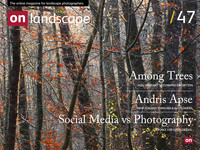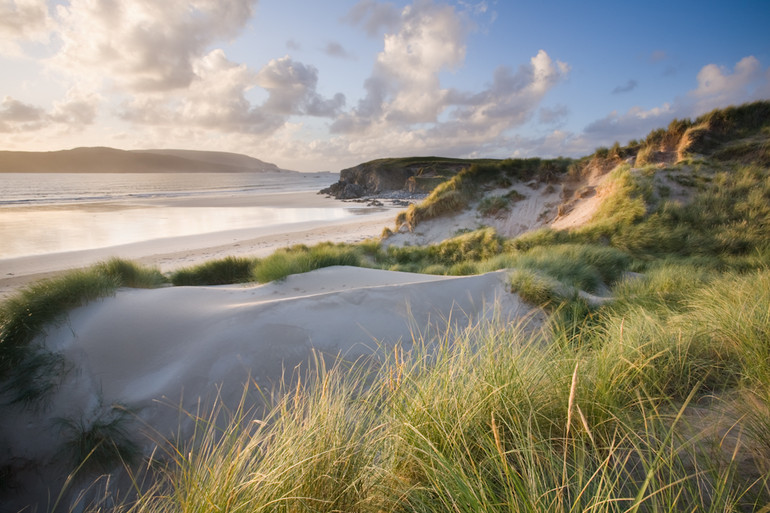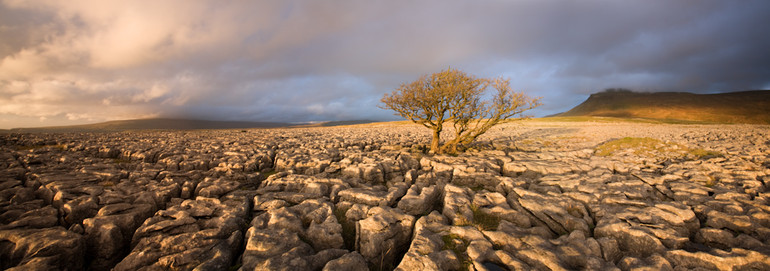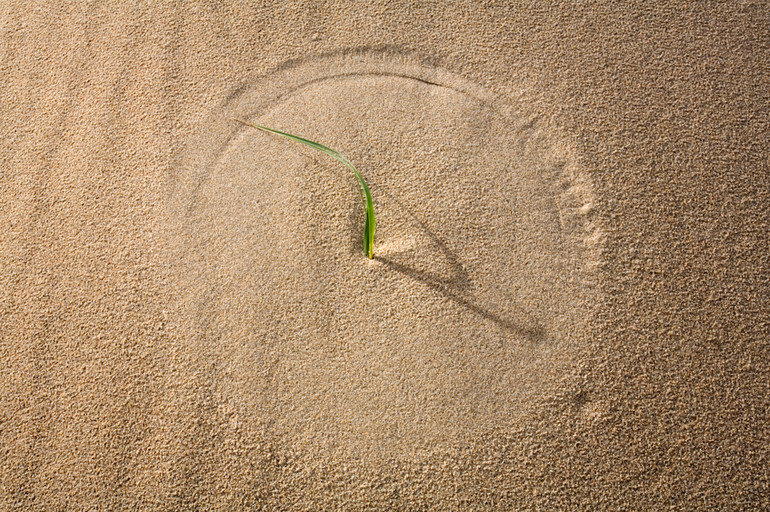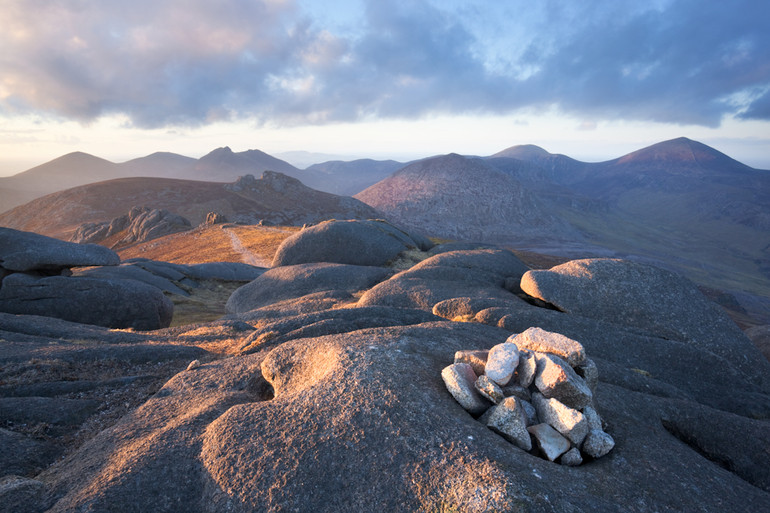Featured photographer

Tim Parkin
Tim Parkin is a British landscape photographer, writer, and editor best known as the co-founder of On Landscape magazine, where he explores the art and practice of photographing the natural world. His work is thoughtful and carefully crafted, often focusing on subtle details and quiet moments in the landscape rather than dramatic vistas. Alongside his photography and writing, he co-founded the Natural Landscape Photography Awards, serves as a judge for other international competitions. Through all these projects, Parkin has become a respected and influential voice in contemporary landscape photography.

Fran Halsall
Fran Halsall specialises in photographing the UK landscape, particularly the wilder parts of the coastline, moorlands and woodlands, and has a particular passion for creating interpretative images of geological formations.
Fran Halsall should be quite well known to any of you who have an affection for the Peak District. She has published a dedicated book on the area, 'Peak District', and has also published a general book on the art of landscape photography. She is also a member of the Outdoor Photographers and Writers Guild (http://www.owpg.org.uk/ - worth a look).
In most photographers lives there are 'epiphanic’ moments where things become clear, or new directions are formed. What were your two main moments and how did they change your photography?
There was one particular winter's morning in the north Staffordshire Peak District in 2004, not long after I went digital, where I shot three decent images none of which were particularly 'obvious' in terms of lighting or composition. On reviewing them later in the day I realised a corner had been turned as there was something in them that I could see that could definitely be called the emergence of my style. On a late stormy afternoon in October 2006 I was at the limestone pavement above White Scars caves (below Ingleborough) battling bracing winds and praying for the sun to appear.
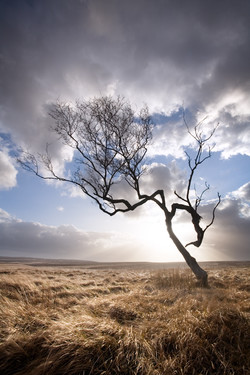 When the clouds fragmented enough in the minutes leading up to sunset for the light to flood across the landscape the intensity of the golden glow against a dark sky tripped a switch in my brain. I haven't enjoyed taking photographs in bright sunshine ever since! This was the beginning of my obsession with difficult weather and pursuing the emotional potential it generates.
When the clouds fragmented enough in the minutes leading up to sunset for the light to flood across the landscape the intensity of the golden glow against a dark sky tripped a switch in my brain. I haven't enjoyed taking photographs in bright sunshine ever since! This was the beginning of my obsession with difficult weather and pursuing the emotional potential it generates.
Tell me about why you love landscape photography? A little background on what your first passions were, what you studied and what job you ended up doing
I love nature full stop and photography is the best way of recording my impressions of it as a camera records light as it actually is (close anyway) rather than at one step removed like painting. So I love its directness, acutally recording light. I have always been obsessed with light and colour - I grew up in a house where art books were everywhere and I was encouraged to look at and analyse everything. This is why i ended up studying art at degree level. After this there was no obvious career to move into straight from uni so i worked in a wholefood co-operative for 2 years, as food (especially vegetarian environmentally friendly food) is one of my big passions. I have also worked in bookshops and eventually I went and worked for what was then Simon Watkinson Photography as a Photoshop monkey. This role mutated into teaching on the landscape workshop side of that business and this was the period in which I embarked on my freelance career.
Could you tell us a little about the cameras and lenses you typically take on a trip and how they affect your photography.
I currently use the Canon 5D mkii - the nicest camera I have ever owned - and i use the mk i version as backup. I use a surprisingly limited number of lenses - 100mm Macro f/2.8, 17-40mm f/4, 70-200mm f/4, TS-E 24mm f/3.5 (all Canon)
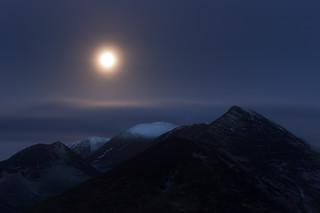 The tilt and shift is quite a recent acquisition but it has already proved indispensible for architectural shots or any subject where there are strong verticals. The macro only gets used for flower photography, which has become quite rare of late as I mostly been obsessing over rocks during the last couple of years. So the wide angle is used for maybe 2/3 of my work as it is great lens to capture landscape scale subject with, although I do tend to use it towards the longer end since going full frame. 17mm is often too wide a view and makes the distance too insignificant and I always want to balance foreground with horizon - not too much of one or the other. It's also great for doing rock details or mini landscapes (or landscapes within a landscape) as I like to think of them. I love the 70-200 for details of tree leaves/branches and picking out patterns within the landscape although this does not see as much use as the wide angle.
The tilt and shift is quite a recent acquisition but it has already proved indispensible for architectural shots or any subject where there are strong verticals. The macro only gets used for flower photography, which has become quite rare of late as I mostly been obsessing over rocks during the last couple of years. So the wide angle is used for maybe 2/3 of my work as it is great lens to capture landscape scale subject with, although I do tend to use it towards the longer end since going full frame. 17mm is often too wide a view and makes the distance too insignificant and I always want to balance foreground with horizon - not too much of one or the other. It's also great for doing rock details or mini landscapes (or landscapes within a landscape) as I like to think of them. I love the 70-200 for details of tree leaves/branches and picking out patterns within the landscape although this does not see as much use as the wide angle.
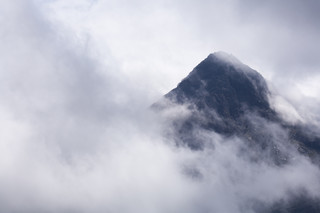 What sort of post processing do you undertake on your pictures? Give me an idea of your workflow..
What sort of post processing do you undertake on your pictures? Give me an idea of your workflow..
Shot as RAW and imported into Lightroom on a linear point curve so that the tones are quite flat. This is because alot of my images are already quite high contrast at the shooting stage. Then I use highlight recovery, reduce black point and alter curves as necessary, sometimes but not always altering the colour. Then I either use Lightroom's inbuilt grad filter to help balance out a bright sky, or if the contrast range was large to start with I will have shot two exposures (usually 2 sometimes 3), then I process up two versions - one for land the other for sky - export them to Photoshop and blend them together. Flatten. Save. That's about it really. B&W I also do in Lightroom these days.
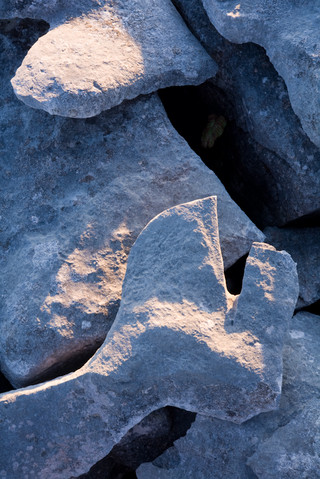 Do you get many of your pictures printed and, if at all, where/how do you get them printed?
Do you get many of your pictures printed and, if at all, where/how do you get them printed?
I print little these days - only when I intend to sell/exhibit them. If I do I like to get Lightjet prints done on photographic paper as the colour and paper surface are excellent. I have used a few printers over the years including Digitalab (used to be MPS) and also BPD Photech.
Tell me about the photographers that inspire you most. What books stimulated your interest in photography and who drove you forward, directly or indirectly, as you developed?
This is a cliche perhaps but JC's 'First Light' was one of the first colour landscape photography books that really appealed to me. When I read that he trained as an artist first it made sense of the whole way he approaches his work, something I thought I could relate to. I had always been aware of Ansel Adams' work and I am inspired not only by the quality and clarity of his photographs but also by his passion for nature and its conservation. Other than that it was work by Fay Godwin, books such as Landmarks, as she had a great sensitivity to her subject, especially trees and fields with big skies - favourite subjects of mine. I like her black and white imagery far more than her later colour work. As I trained in fine art I was also exposed to may of the classic 20th century photographers such as László Moholy-Nagy, whose use of shape and form always had an impact on me.
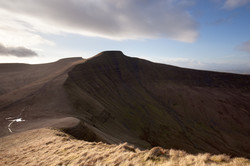 Edward Weston's amazing shots of landscapes and natural still life subjects made a big impression on me, particularly because they are high contrast and crisp. Cartier-Bresson of course, although I have never been that interested in documentary imaging myself I love the clarity of his imagery and the humanity. Then Andy Goldsworthy, although he is not a photographer in the strictest sense - more a land artist - through his work I developed my interest in natural forms and I started using photography to document some site specific work with nature I was doing in my latter years at college. This evolved into botanical and tree photography and the rest followed.
Edward Weston's amazing shots of landscapes and natural still life subjects made a big impression on me, particularly because they are high contrast and crisp. Cartier-Bresson of course, although I have never been that interested in documentary imaging myself I love the clarity of his imagery and the humanity. Then Andy Goldsworthy, although he is not a photographer in the strictest sense - more a land artist - through his work I developed my interest in natural forms and I started using photography to document some site specific work with nature I was doing in my latter years at college. This evolved into botanical and tree photography and the rest followed.
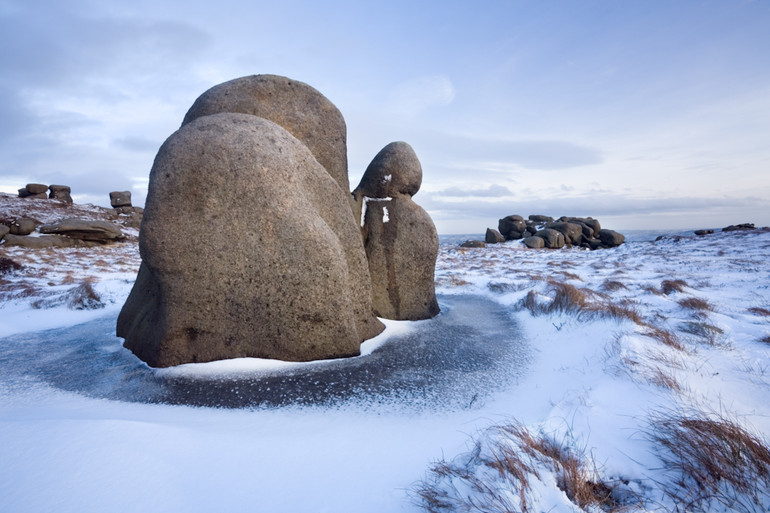 I'm interested in why you think there are so few women in landscape photography and also a few of your recommendations for who we should be talking to
I'm interested in why you think there are so few women in landscape photography and also a few of your recommendations for who we should be talking to
It is a very demanding career choice that is incompatible with having a family. Taking a career break to have children would have a negative impact on career development. I suspect most women who would want to have a career in photography would choose a path where the business model is more straightforward e.g portraits and weddings where selling direct to the public makes cash flow more predictable. 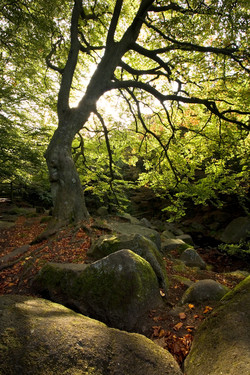 Although I see many women with a passion for landscape it is still perceived as a bit of boy's club. I have taught many more men than women ( about 2/3 to 1/3) and photography clubs are largely male still. I get some funny comments (usually well meant) about being quite small and managing to carry all the gear, and others presume that I must have company when I go on location, which is rarely the case. Perhaps women are concerned about safety while carrying expensive gear or just personal safety in general. Being out on location for hours requires a degree of toughness that many women simply don't have! Not meaning to be disparaging but that is my experience.
Although I see many women with a passion for landscape it is still perceived as a bit of boy's club. I have taught many more men than women ( about 2/3 to 1/3) and photography clubs are largely male still. I get some funny comments (usually well meant) about being quite small and managing to carry all the gear, and others presume that I must have company when I go on location, which is rarely the case. Perhaps women are concerned about safety while carrying expensive gear or just personal safety in general. Being out on location for hours requires a degree of toughness that many women simply don't have! Not meaning to be disparaging but that is my experience.
Would be good to talk to Heather Angel and also Karen Frenkel (don't let her out of date website put you off, she has some great images). Other than that I struggle to think of any female landscape pros.
You mentioned about a break into further education, could you tell us about the course you are embarking on and where you see it relates to your photography?
I have just started an MA in landscape architecture. I have achieved much of what I set out to do photographically speaking and having done a third book project recently (and working harder than ever!) I decided that I would like to have a rest and explore other avenues. Landscape architecture encompasses so much of what I am interested in - use of plants for aesthetic reasons as well as for promoting biodiversity, improving public spaces, greening brownfield sites, policy and planning, environmental assessments. There is only so far I could go with photography in terms of its usefulness - for the last couple of years I have really wanted to start making a real positive difference to people's lives. I decided on this route as it draws on my knowledge of flora, habitats, design and art. My photographic experience will be used to document spaces and make records of plant species. So in some ways similar to how I work now only with the emphasis on designed rather than natural environments. Briefly I considered doing an ecology degree but the prospect was a little too daunting. With landscape architecture I can still eventually specialise in ecological planting design, which is the direction I am trending towards. Who knows what I'll be at the end of two years though.
Tell me what your favourite two or three photographs are and a little bit about them.
White Scars and Inglebrough – This is the afternoon I referred to earlier, with the dramatic golden light and storm clouds. It was the first time that I had ventured out to this location and despite the gloomy light when I arrived I was blown away by the dramatic landforms. This was the moment I fell in love with limestone pavements and I seriously doubt I’ll ever get such perfect lighting as this again. From this I learnt from this that some panoramic images are nearly impossible to stitch manually, however I persisted and the results were worth the extra time and effort.
Grass Circle, Mangersta beach – This is a simple approach to a truly unusual occurrence. I have never seen a blade of grass inscribe a perfect circle into a dune before or since this. I love geometry and the clearly the shapes the more satisfying the composition. Aside from the image’s form I am also drawn to the texture and as the sand is lit from a raking angle every last grain is revealed perfectly.
Slieve Binnian – Some photographs are more than worth the wait and the struggle to get there. After a few days of cloud and no direct light I battled my way back up Slieve Binnian only to be nearly torn to shreds by a gale force wind - kind that makes it both nearly impossible to see and to take any sharp images. Nonetheless I could see that the light was going to be special and as the sun dipped towards the horizon the warm light picked out the granite’s textures giving them a wonderfully tactile quality, which is offset by the soft blue shadows. The deep sense of perspective is analogous to the way I experienced the landscape, clambering over rocks to see the rest of the mountains beyond, so it really coveys a sense of place – a quality I always strive to record.
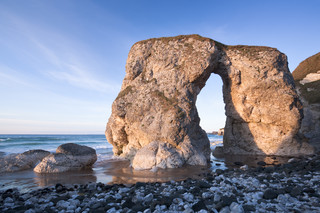 If you were told you couldn’t do anything photography related for a week, what would you end up doing (i.e. Do you have a hobby other than photography..)
If you were told you couldn’t do anything photography related for a week, what would you end up doing (i.e. Do you have a hobby other than photography..)
I'd probably be tending my veg garden or reading.
What sorts of things do you think might challenge you in the future or do you have any photographs or styles that you want to investigate? Where do you see your photography going in terms of subject and style?
I think I am getting more and more critical of my work, which makes it harder to produce imagery that I am happy with. You could say that is making me much more selective in what I shoot - I have no desire to produce work purely for commercial reasons (never the best idea!) and I am returning to my roots as an artist. My style is getting closer to the 'simple' aesthetic I so admire in minimalist design but I also want to stay in touch with the emotional aspects of landscape photography - the colour and atmosphere associated with certain weather events - I don't want my work to become too clinical.
I still plan to work primarily in the genre of landscape/nature as it this interest that brought me to photography in the first place.
Who do you think we should feature as our next photographer?
You could take a look at my good friend Alex Hyde. He is primarily a natural history man but he does have some great landscapes too.
Thank you Fran for your participaton - we'll hopefully take a look at Alex, Heather and Karen in a future issue. If you'd like to see more of Fran's work you can look at her website fran-halsall.co.uk or her Facebook page.

